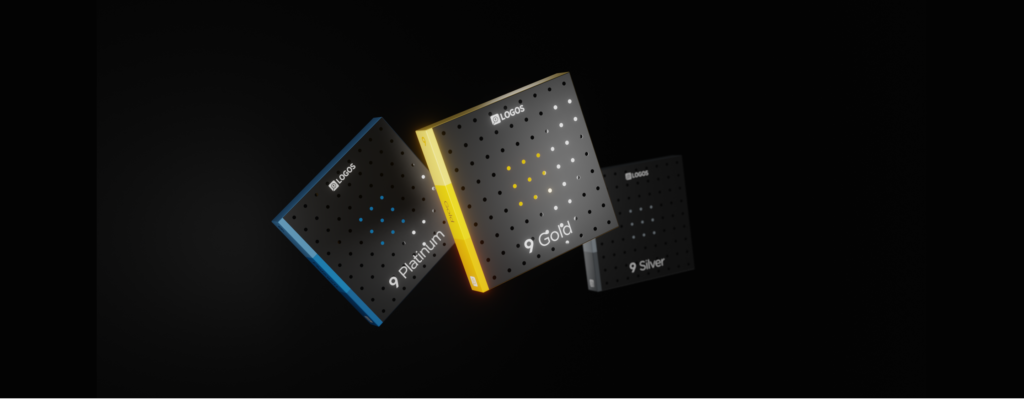
Logos 9 released today. I’ve been using a review copy for the past several weeks, and the following are my favorite new features (along with some ideas for future improvement).
Dark Mode
Faithlife, the makers of Logos Bible Software, said that dark mode was their top requested feature. It was certainly at the top of my wish list. I often split the screen on my Surface, with Logos on one side and OneNote on the other. Using OneNote in dark mode and Logos without was less than ideal.
Logos did a good job with dark mode. Though the addition of this mode may seem like a small change, I’m sure that’s not how the programmers felt! They had to take into account, for instance, all the highlights that users have applied to their Bible’s and other books. I’ve found that these transitioned well.
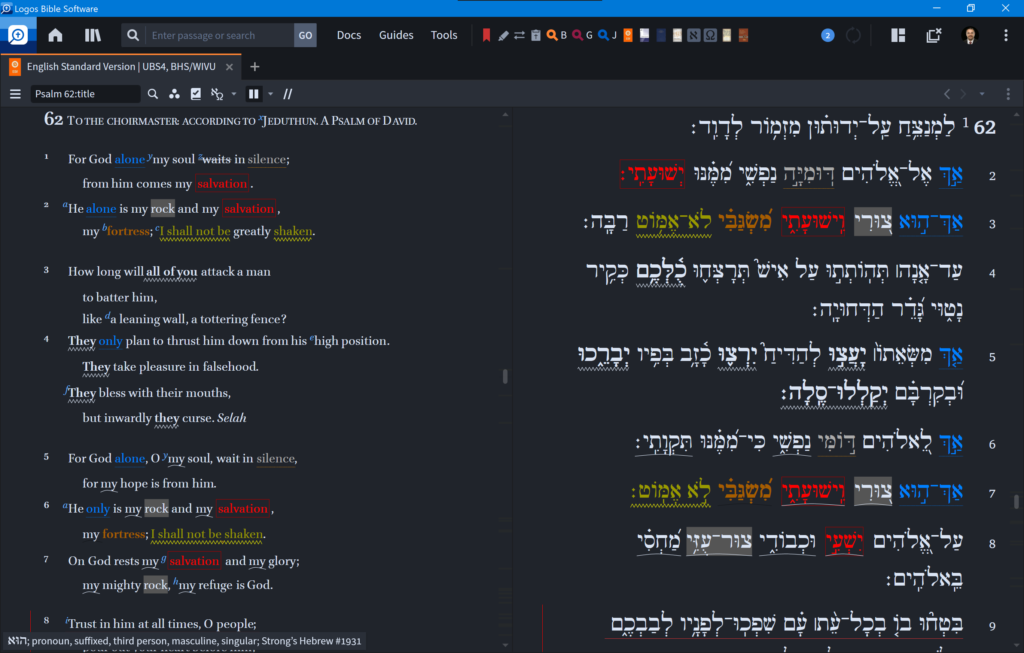
I was also pleased to see that Logos lets users set the mode to match their operating system mode. (In future, I’d like the Logos mobile app to include this feature).
Switching modes does require a program restart. Feature idea for Logos 10: When the program is in dark mode, allow users to toggle the background of the panels between light and dark, as OneNote does.

Factbook
The Factbook is the major new feature for Logos 9. The larger your Logos library is, the more benefit you get from various Logos features. On the other hand, the larger a Logos library gets, the more difficult it becomes to find certain information. Searches can generate a mountain of results, and it can take hours to sort the wheat from the chaff.
For years, Logos has included dynamic guides that help address this challenge: the Bible Word Study Guide, Exegetical Guide, the Passage Guide, the Theology Guide, etc. The new Factbook doesn’t replace these guides, but it is designed to be the new starting place for searches about any topic. I’ve found that if I type a term in the Go Box and hit enter, my search will open in the new Factbook. And given the way the new Factbook works, that’s precisely what I want it to do.
The Factbook will handle searches for a wide variety of searches: Greek or Hebrew words, biblical passages, theological topics, names of Biblical people or significant Christian leaders, and much more. The results returned will vary based on the content searched for, but the entries follow a similar pattern: brief definition, key article, key passages (if relevant), related historical events (if relevant), key books on the topic or by the person, dictionary articles, journal articles, links to launch related guides or searches.
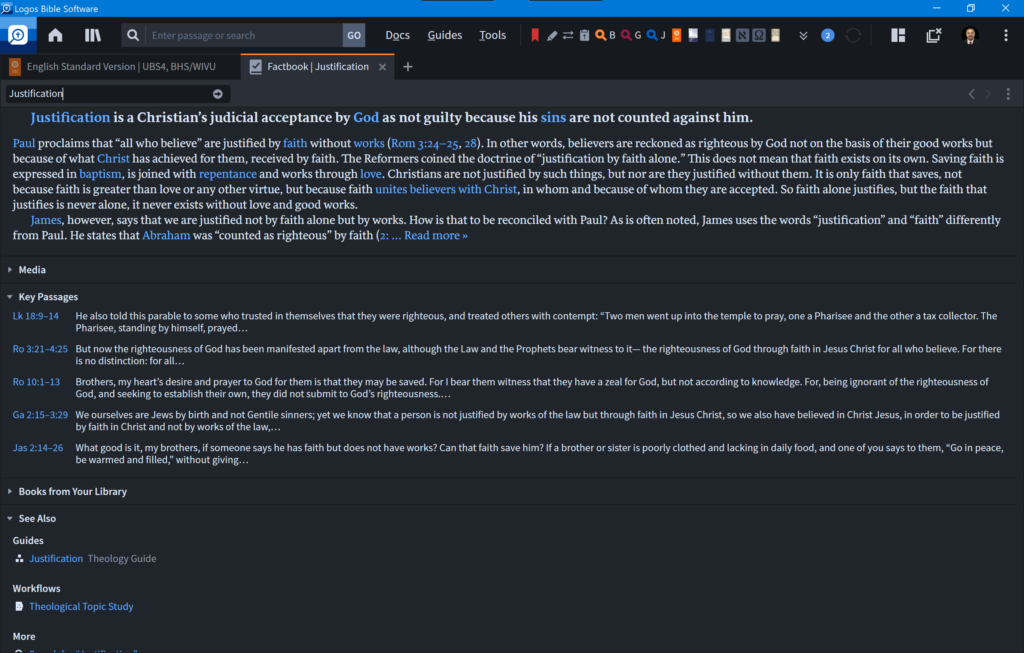
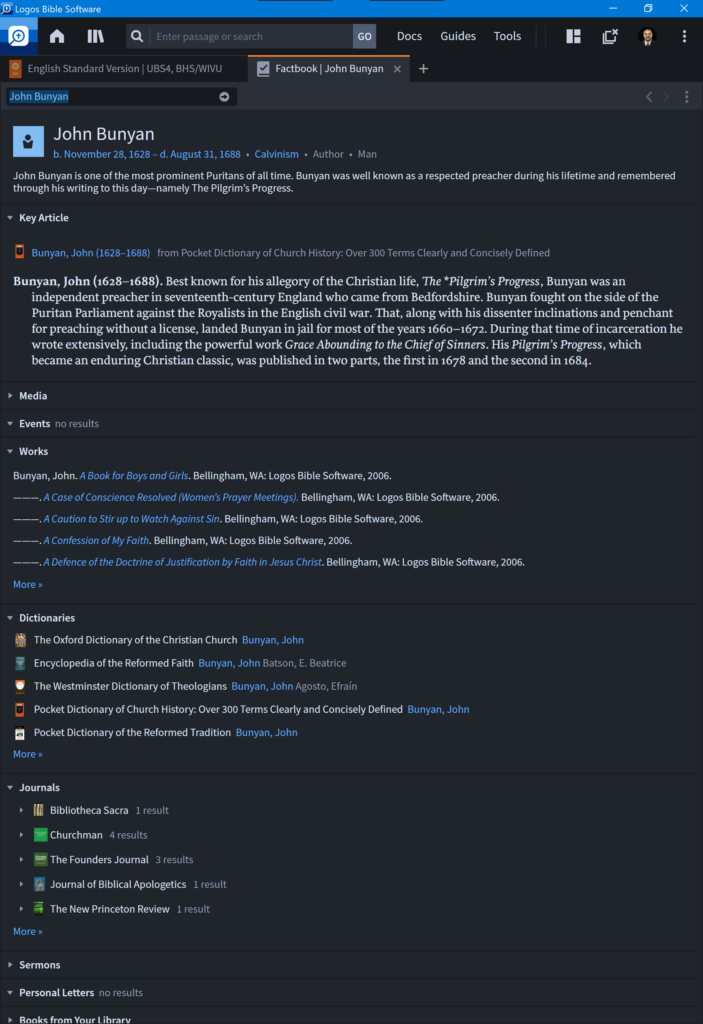
Commentary View
A listing of commentaries will often appear within various guides and, now, within Factbook entries. These now helpfully list the authors alongside the titles (very helpful, since many commentaries share the same titles). Logos 9 also now provides different ways to sort the commentaries: by user priority, series, author, type, or era. This is a small change that translates into a large advance in useability.
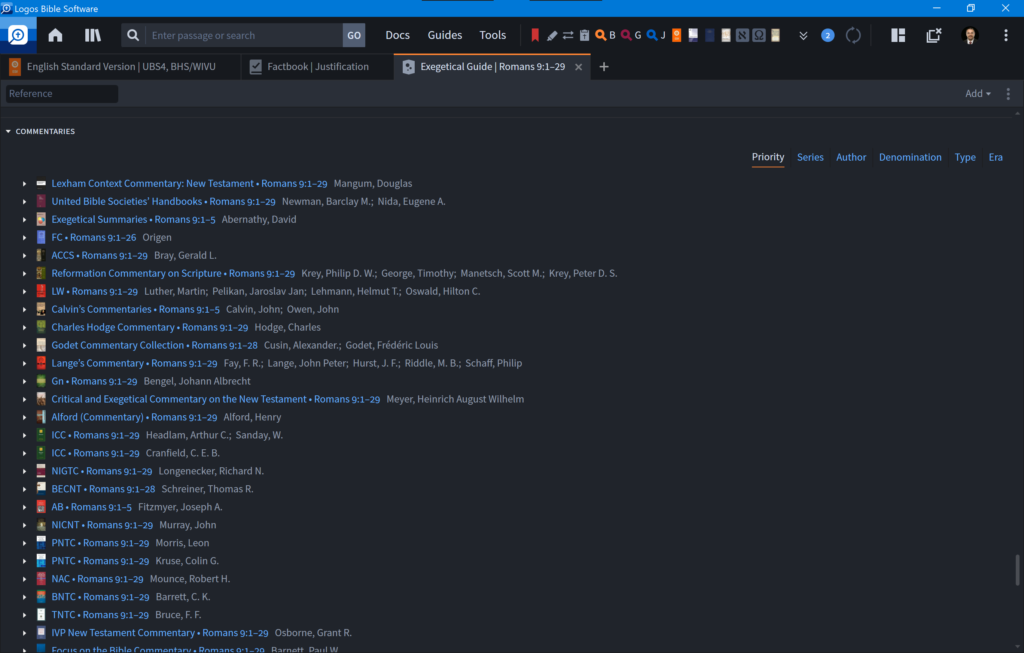
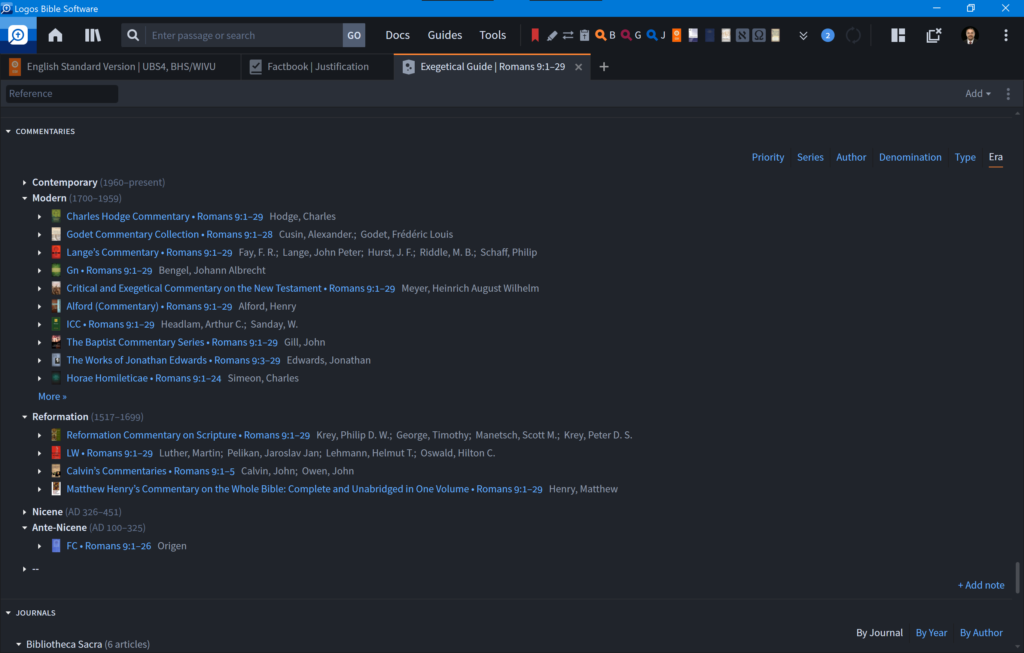
Visuals
Logos 9 has refined or introduced a number of helpful new visuals. Charts are more easily generated and viewed from searches. They now open in a separate charts tab.

The Bible Books Explorer offers a variety of visuals. For instance, it will display date ranges for when the books of the Bible were written. No longer will I need to flip through a NT Introduction or an OT Introduction to remind myself when a book was thought to be written. Of course, different scholars differ about the dates for some of the biblical books. Helpfully, the user can choose the source that generates the chart.
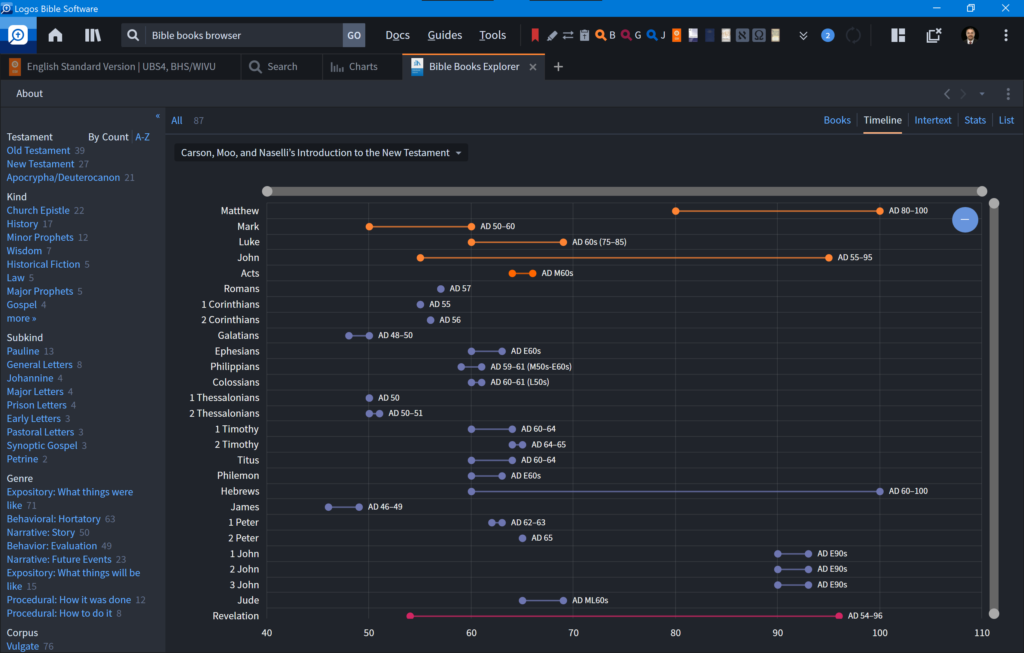
The Intertext tab in the Bible Books Explorer shows how different books of the Bible relate to one another via quotation, citations, allusion, or echo. This is visually helpful in a general way, but I was also left wishing I had access to the underlying data (and that I had the ability to edit it according to my own studies).
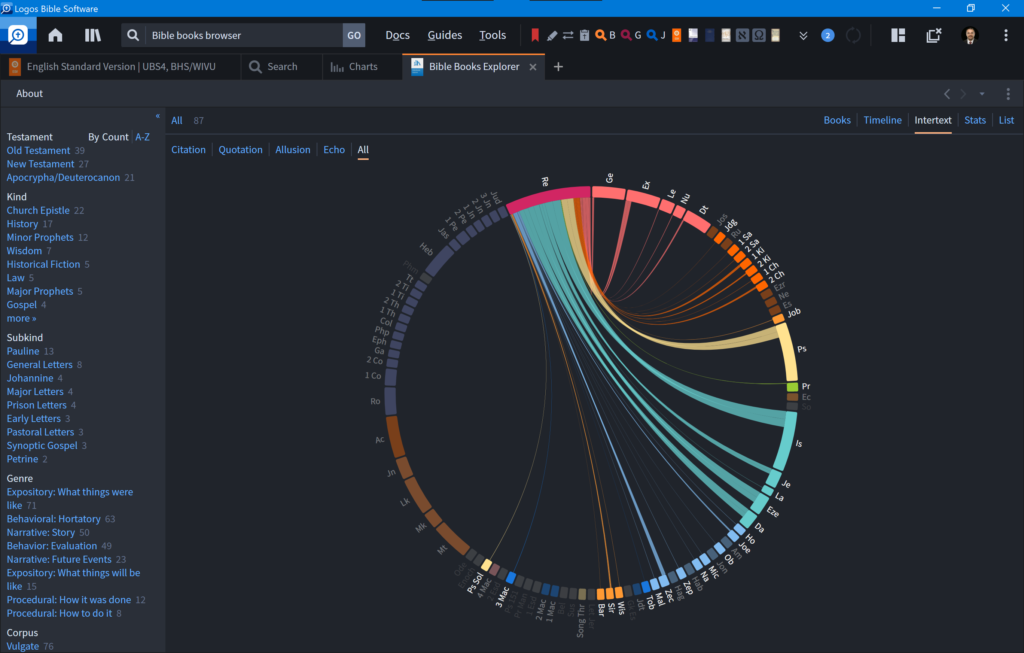
Other Features
Logos 9 has a slew of other new features that I’ll list here but won’t cover in any detail below since they are not features that I personally use.
- A new sermon builder
- A sermon manager that allows pastors to browse their sermons by date, passage, topic, etc.
- The sermon manager also allows a pastor to plan sermons series for the year in a visually striking radial calendar.
- A new counseling guide
- Images can be added to notes
While these are not features I use, the sermon manager looks like a very helpful addition for pastors.
Touch
I use Logos on a Surface Pro 6, and, in general, Logos 9 works well with touch. I’m glad to be able to use the full-featured program on a tablet form factor.
However, while the main resources respond to touch, the interactives do not. Worse, the new Logos 9 Factbook does not respond to touch. (Oddly, visually similar Guides do respond to touch.) This is frankly unacceptable. Windows devices have had touch for the past decade, and a Windows program in which touch works only selectively is broken. Logos would not release an iPad app in which some features could only be accessed via keyboard and mouse, and the same should be true of their Windows app.
Verdict
Logos 8 was a substantial update from Logos 7. Logos 9 builds on the changes that Logos 8 introduced. The keynote features of Logos 9 bring significant refinements to the program that increase its value and usefulness.
If you are interested in upgrading, doing so via this link will give you a 15% discount on base packages and five free additional books from a pre-selected list.

Joel Arnold says
Great review. The underlying data on the intertextuality explorer is drawn / accessible from the NT Use of the Ot Interactive, isn’t it? Agreed that it would be helpful to have a user editable component in both modules.
Sorry to hear about the windows touch problem. Hopefully just a temporary bug. I noticed significant updates and refinements just during the week or so I was using the beta.